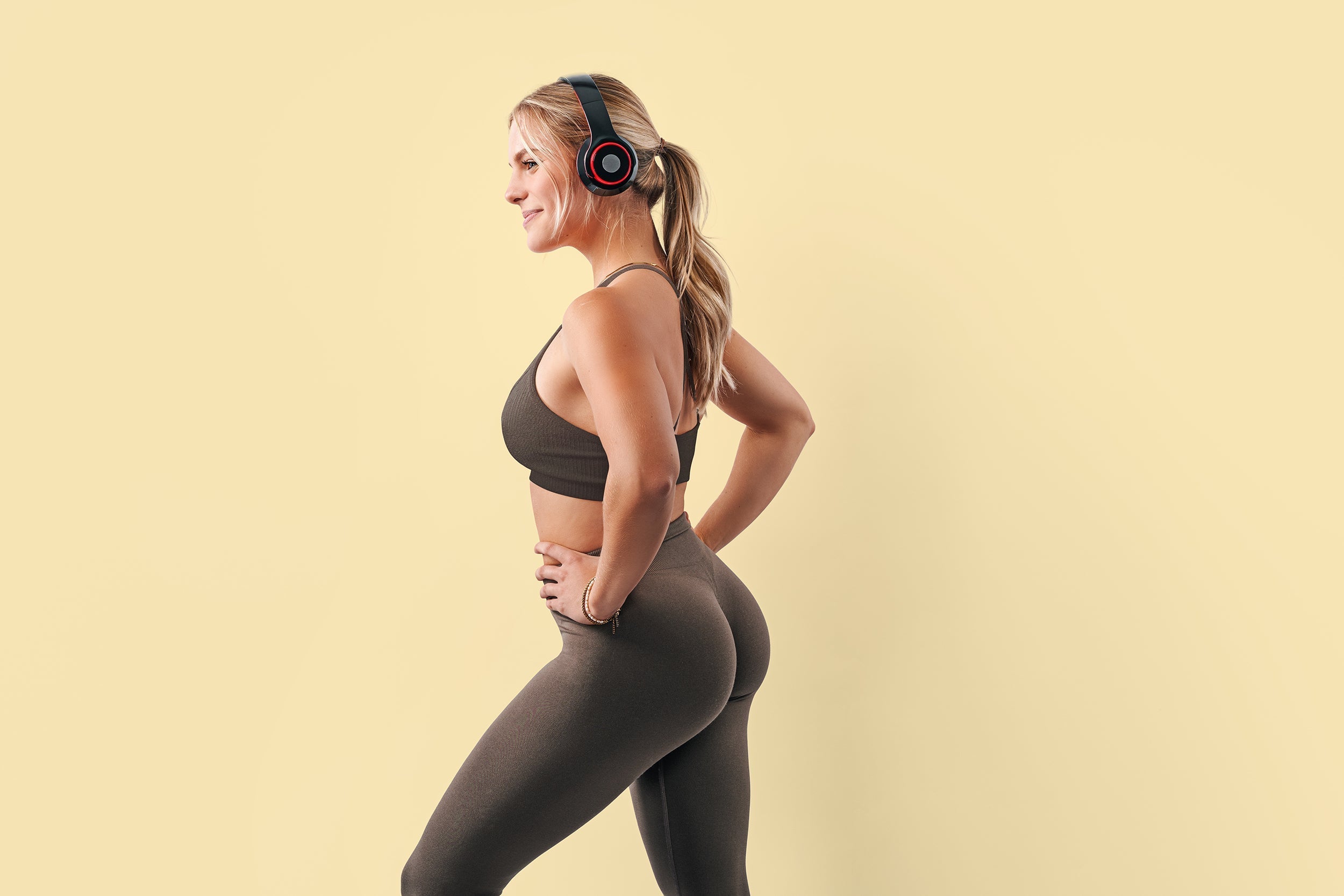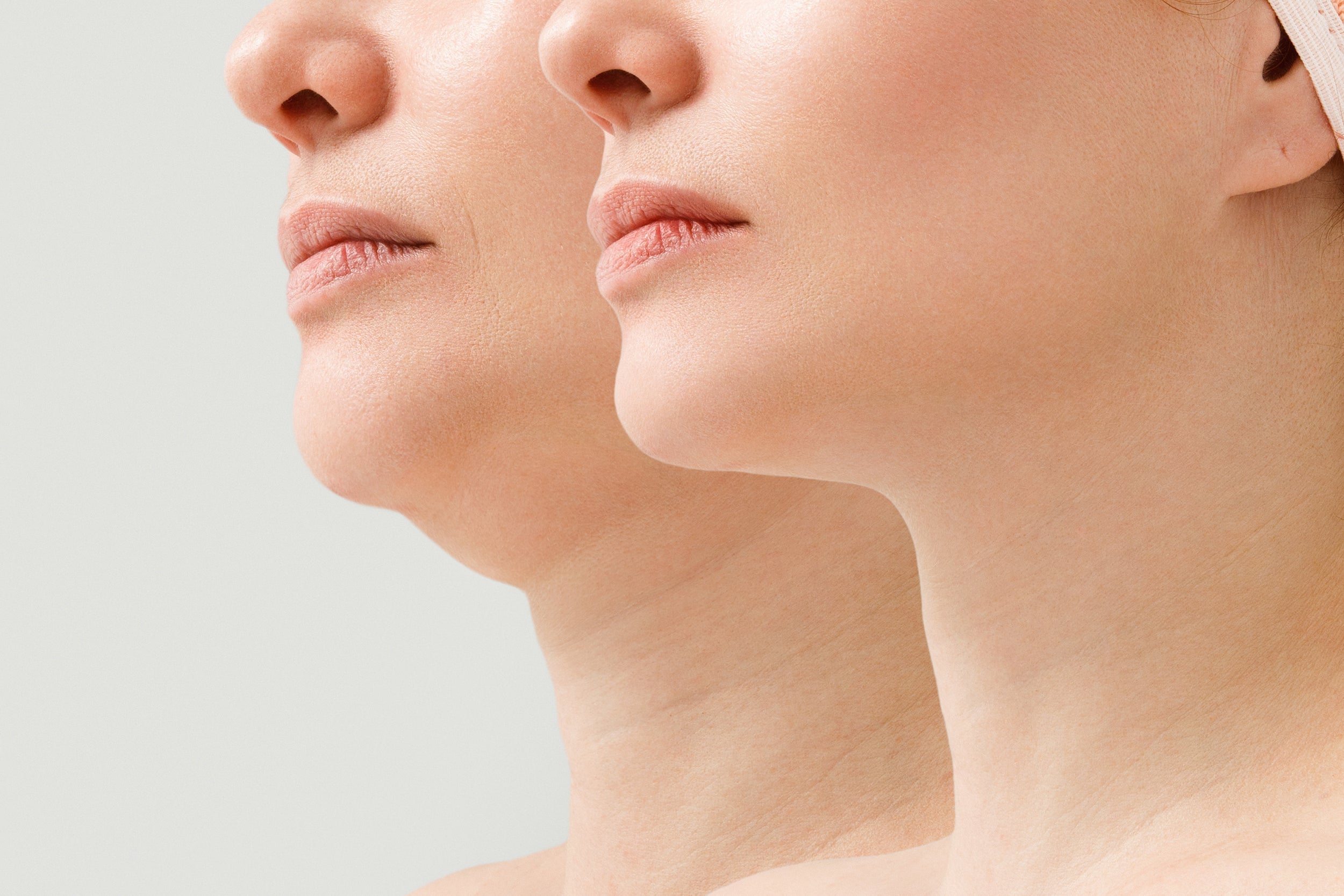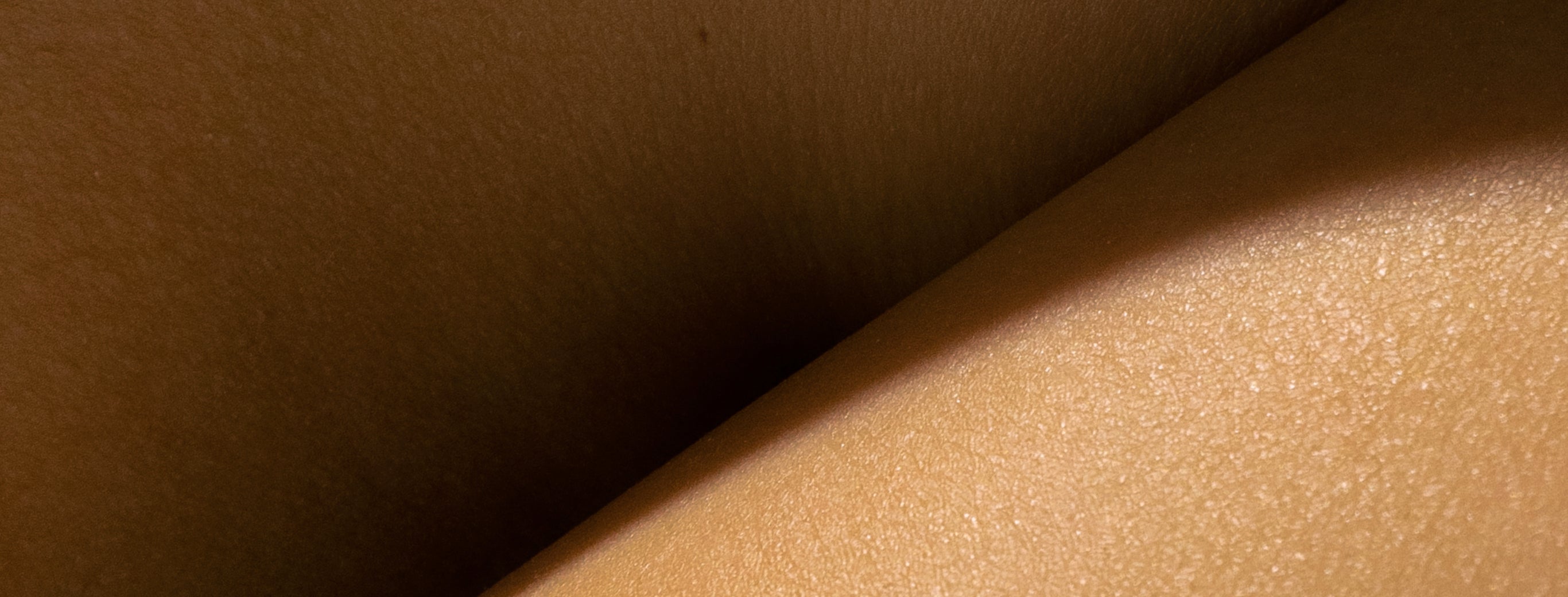Post Facelift Swelling: The Hidden Truth About Your Recovery Timeline

Most facelift patients receive standard recovery guidance about "expecting some swelling," but what they don't receive is crucial information about the distinct patterns, individual variables, and evidence-based management strategies that can dramatically impact their healing experience.
Research reveals that facial surgery creates unique inflammatory challenges not seen in other cosmetic procedures. The complex network of facial muscles, delicate skin structures, and proximity to sensory organs means your recovery requires specialized knowledge and targeted intervention strategies.
This guide reveals the clinical realities of post-facelift swelling along with evidence-based approaches that can optimize your recovery timeline and protect your aesthetic investment.
The Facelift Swelling Spectrum: Why Your Experience Is Unique
Facelift swelling doesn't follow predictable patterns because your facial anatomy and surgical approach create individual variables that most patients never consider.
Surgical Depth Variables
Deep plane techniques affect different tissue layers than superficial approaches, creating distinct swelling patterns. Endoscopic facelifts produce localized swelling concentrated around entry points. Traditional facelifts create more diffuse swelling across treated areas. Combined procedures like neck lifts or fat grafting multiply inflammatory responses in unpredictable ways.
Facial Architecture Impact
High cheekbone structure tends to show more dramatic initial swelling but faster resolution. Patients with naturally fuller faces may experience less obvious swelling changes. Skin thickness varies significantly across facial regions, creating uneven swelling patterns that can persist for months.
Individual Healing Biology
Some patients produce excessive scar tissue that can trap fluids longer. Others have naturally efficient lymphatic systems that clear swelling rapidly. Genetic factors influence collagen production rates, directly affecting how quickly tissues return to normal architecture.
Daily Swelling Fluctuation Patterns
Understanding your daily swelling rhythms helps distinguish normal healing from concerning changes.
Circadian Swelling Cycles
Facial swelling typically peaks in late afternoon due to gravitational accumulation throughout the day. Morning appearance often represents your "baseline" swelling level after overnight drainage. Most patients notice their most accurate assessment occurs between 10 AM and noon when lighting is optimal.
The timing of peak swelling varies among individuals. Some patients experience maximum puffiness around 3-4 PM, while others don't reach peak swelling until evening. Understanding your personal pattern helps you schedule important activities during optimal appearance windows.
Environmental Triggers
Air travel can cause sudden swelling flare-ups due to cabin pressure changes that affect lymphatic drainage efficiency. Seasonal allergies can compound surgical swelling in unexpected ways, particularly during spring and fall transitions.
Hormonal Fluctuation Effects
Women often notice swelling variations that correspond to monthly cycles, with many experiencing increased facial puffiness during the luteal phase when progesterone levels peak. Stress hormone elevation can prolong inflammatory responses significantly, creating a cycle where anxiety about appearance increases cortisol production, which in turn worsens swelling.

The Facial Recovery Nutrition Challenge
Facial surgery creates nutritional demands that differ significantly from other cosmetic procedures due to the complex healing requirements of delicate facial tissues.
Specialized Tissue Repair Demands
Facial muscles require different amino acid profiles than body tissues for optimal healing. Delicate facial skin needs enhanced antioxidant protection during the remodeling phase. Blood vessel repair around sensory organs demands specific nutrient cofactors rarely found in standard supplements.
Absorption Complications
Facial surgery medications can impair nutrient uptake precisely when demands are highest. Restricted jaw movement may limit food variety during critical healing phases. Nausea from anesthesia and pain medications complicates consistent nutritional intake.

Nutritional Support for Post Facelift Swelling
Clinical studies on facial surgery recovery demonstrate that specialized nutritional formulations can reduce healing complications by up to 35% compared to standard dietary approaches. However, achieving therapeutic nutrient levels requires enhanced absorption forms specifically designed for post-surgical digestive challenges.
Facial healing demands go beyond what general wellness supplements can address. Random vitamin combinations often include ingredients that can interfere with surgical recovery, while therapeutic dosing becomes impossible due to poor absorption or digestive upset. Most importantly, facial tissues have distinct nutritional requirements that change as healing progresses through different phases.
Sulinu's Before + After Vitals stands out as the world's first comprehensive wound healing supplement designed specifically for cosmetic surgery recovery. Unlike general multivitamins or randomly selected supplements, this specialized formula contains clinically-studied ingredients that reduce swelling and bruising, provides the precise nutrients needed for collagen production and tissue repair, excludes problematic ingredients that could impair healing, and adjusts nutrient levels to match your body's changing needs during different phases of recovery.
This NutriSurgical formulation targets facial swelling reduction through proven anti-inflammatory compounds while delivering exactly what delicate facial tissues need for optimal collagen rebuilding and repair. The comprehensive approach addresses the unique metabolic demands of facial surgery recovery through four essential components working synergistically to optimize healing outcomes.
BioEnhanced Vitamin C
BioEnhanced Vitamin C delivers rapid uptake into facial circulation, supporting intensive collagen synthesis required for facial architecture reconstruction while avoiding gastric irritation that can disrupt recovery nutrition. This enhanced delivery system ensures sustained antioxidant protection during the critical tissue remodeling phases specific to facial surgery.
Proteolytic Enzymes
These critical enzymes accelerate the breakdown of inflammatory cascade proteins that accumulate around facial nerve pathways while optimizing amino acid liberation from restricted dietary intake during recovery periods when jaw mobility is limited. These targeted enzymes facilitate efficient protein processing when facial surgery patients face unique nutritional absorption challenges.
Hydrolyzed Collagen
This particular type of collagen supplies the facial dermis with specialized peptide sequences that trigger enhanced endogenous collagen synthesis, directly influencing the structural integrity that determines facial contour outcomes. This bioactive protein fraction stimulates cellular collagen production within facial tissue matrices essential for optimal aesthetic results.
Biome Synbiotics
A critical component to counteract the microbiome disruption commonly caused by surgical antibiotics and pain management protocols, maintaining digestive ecosystem balance essential for nutrient assimilation during facial recovery when consistent nutrition intake becomes challenging.
This integrated approach addresses the physiological disruption that facial surgical trauma creates while providing specialized nutritional support unavailable through standard supplementation. The precise formulation ensures therapeutic nutrient delivery when digestive capacity is compromised by surgical stress and pharmaceutical interventions, making it a critical component of comprehensive facial surgery recovery protocols.
SHOP THE BEST SUPPLEMENT FOR POST FACELIFT SWELLING
Advanced Swelling Management Protocols
Precision Cold Therapy
Apply cooling to temporal regions rather than directly over surgical sites for optimal vasoconstriction. Use 12-minute intervals followed by 30-minute rest periods to maximize anti-inflammatory benefits without tissue damage.
Targeted Elevation Techniques
Maintain 35-degree head elevation during sleep to optimize facial drainage without compromising neck circulation. This specific angle maximizes gravitational assistance for lymphatic drainage while preventing neck hyperextension.
Strategic Hydration Management
Consume 6-8 ounces of fluid every 2 hours rather than large volumes sporadically. Add natural electrolytes to support cellular fluid balance disrupted by surgical stress. Avoid excessive plain water which can worsen facial puffiness.
Environmental Optimization
Room temperature between 68-70°F provides optimal comfort without promoting vasodilation that worsens swelling. Humidity levels around 40-50% prevent excessive dryness while avoiding stuffiness.
Complication Recognition Framework
Progressive Improvement Indicators
Week-over-week reduction in morning swelling levels. Symmetrical healing patterns between facial sides. Responsive swelling that decreases with elevation and rest. Gradual return of normal facial sensations.
Intervention Required Signs
Asymmetry that develops or worsens after initial symmetrical healing. Hardened areas that don't soften with gentle massage. Persistent numbness beyond expected timeline. Swelling accompanied by vision changes or severe headaches.
Emergency Response Situations
Sudden onset breathing difficulties or swallowing problems. Severe eye swelling that impairs vision. Signs of infection including fever, red streaking, or unusual drainage. Neurological symptoms like facial weakness or severe dizziness.
Recovery Milestone Mapping
Initial Phase (Days 1-10)
Expect maximum swelling that may completely mask surgical improvements during this inflammatory peak. Your face may appear dramatically different from your final results, with some areas showing 200-300% of normal size.
Stabilization Period (Weeks 2-6)
Swelling becomes more predictable and responsive to management techniques as acute inflammation subsides. Initial results become visible though final outcomes remain unclear.
Resolution Phase (Months 2-4)
Majority of inflammatory response resolves allowing accurate result assessment. This phase often proves psychologically challenging as improvements become subtler and harder to detect daily.
Maturation Stage (Months 4-12)
Final aesthetic results emerge as tissues reach permanent positions. Any remaining swelling is typically imperceptible to others and only noticeable during periods of fatigue or stress.
Post Facelift Swelling FAQs
How can I tell if my facial swelling pattern is normal?
Normal facelift swelling follows a general downward trend over weeks, remains relatively symmetrical, and responds to standard management techniques like elevation and cold therapy. Concerning patterns include sudden asymmetry, progressive worsening, or swelling accompanied by fever or neurological symptoms.
Why does my face swell differently than other patients I've seen online?
Individual facial anatomy, surgical technique variations, and personal healing biology create unique swelling patterns. Factors like skin thickness, lymphatic efficiency, age, and concurrent procedures all influence your specific recovery timeline.
When should I expect to see my actual facelift results?
Initial results become apparent around 6-8 weeks as major swelling subsides, though significant refinement continues for 3-6 months. Final results typically stabilize between 6-12 months when all tissue settling is complete.
Does specialized nutrition really impact facial healing?
Clinical research specifically on facial surgery shows that targeted nutritional support can significantly improve healing outcomes and reduce complications. The unique demands of facial tissue repair require therapeutic levels of specific nutrients that standard supplements cannot provide effectively.
Nutritional support specifically formulated for cosmetic surgery recovery, such as Sulinu's Before + After Vitals, delivers therapeutic nutrient concentrations validated for facial tissue repair and swelling management. This NutriSurgical methodology provides enhanced bioavailability forms engineered for post-surgical digestive limitations, ensuring nutrient access during periods when conventional supplementation proves inadequate.
The targeted formula addresses facial recovery demands through research-validated ingredients that function synergistically to minimize inflammatory response, support structural protein synthesis, and optimize cellular repair mechanisms. Unlike standard supplements that may contain contraindicated ingredients or subtherapeutic dosing, this specialized system modulates nutrient delivery to match the evolving metabolic requirements throughout facial recovery phases, establishing it as a fundamental element of evidence-based facial surgery recovery management.
SHOP THE BEST SUPPLEMENT FOR POST FACELIFT SWELLING
What daily habits most affect my swelling levels?
Sleep quality and positioning have the greatest impact on daily swelling variation. Sodium intake, stress levels, and hydration patterns also significantly influence facial puffiness. Consistent application of management techniques produces better results than sporadic intensive efforts.
How long should I continue active swelling management?
Active management techniques should continue through at least 6-8 weeks when major inflammatory responses resolve. Nutritional support often benefits patients through 3-4 months as tissues complete their remodeling process.
Are professional treatments worth the investment for faster healing?
Professional lymphatic drainage and specialized facial treatments can accelerate swelling resolution when performed by qualified practitioners familiar with post-surgical care. However, timing and technique are crucial for safety and effectiveness.
What factors might delay my recovery timeline? Poor nutritional status, inadequate sleep, high stress levels, smoking, excessive alcohol consumption, and failure to follow post-operative instructions can significantly extend recovery timelines. Medical conditions affecting circulation or immune function may also impact healing rates.
Medical Disclaimer
This content is provided for educational purposes only and should not replace professional medical advice, diagnosis, or treatment. Every facelift recovery is unique and depends on numerous factors including surgical technique, individual healing characteristics, and adherence to post-operative instructions.
The information represents general guidelines and should never replace specific instructions from your plastic surgeon and medical team. Post-operative care protocols vary significantly between surgeons and patient circumstances. Always follow your surgeon's specific guidelines over general information found online.
If you experience concerning symptoms during recovery—including excessive swelling, infection signs, severe pain, or any abnormal symptoms—contact your surgeon immediately or seek emergency medical care. Individual results vary significantly, and no content can guarantee specific outcomes or timelines.
Before + After Vitals
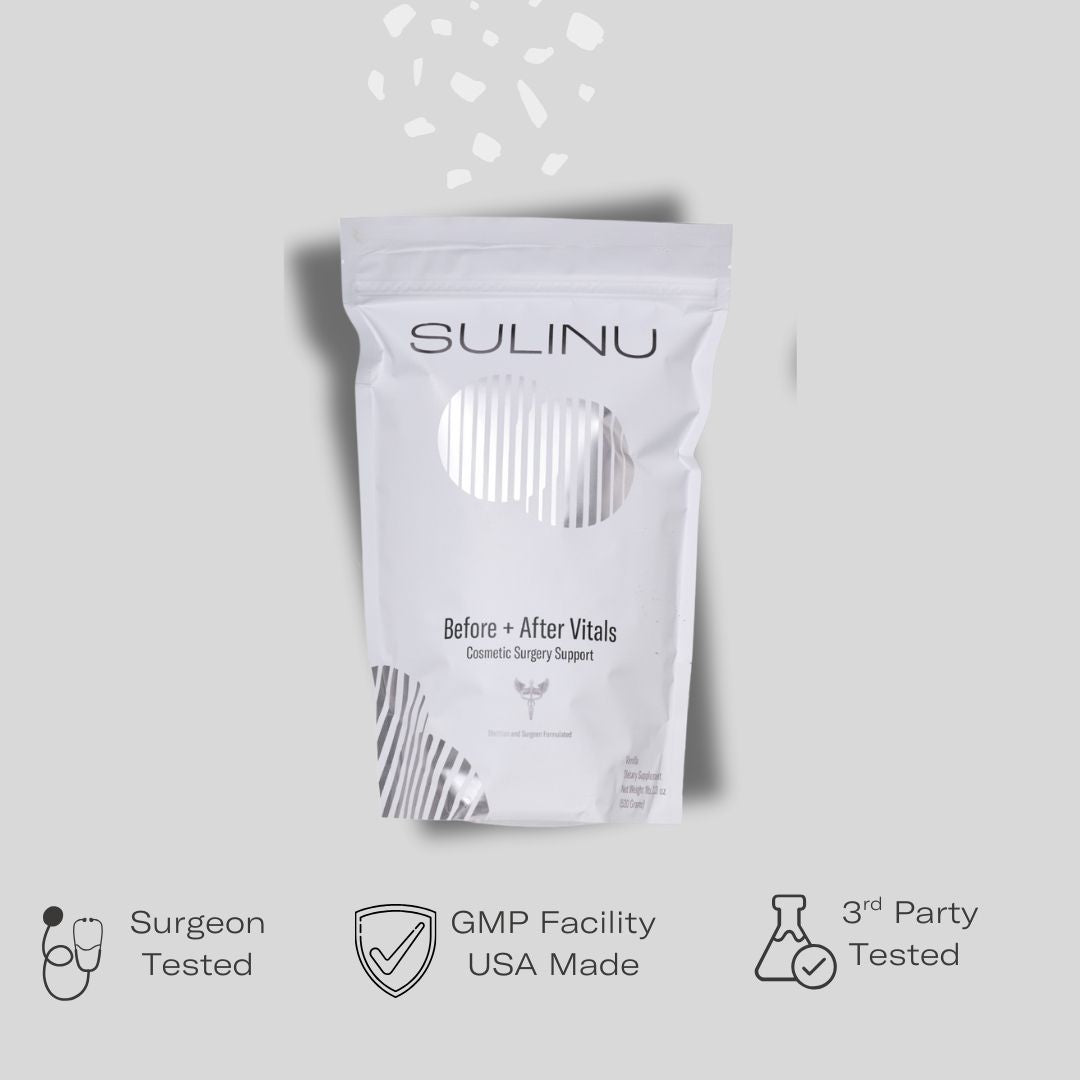
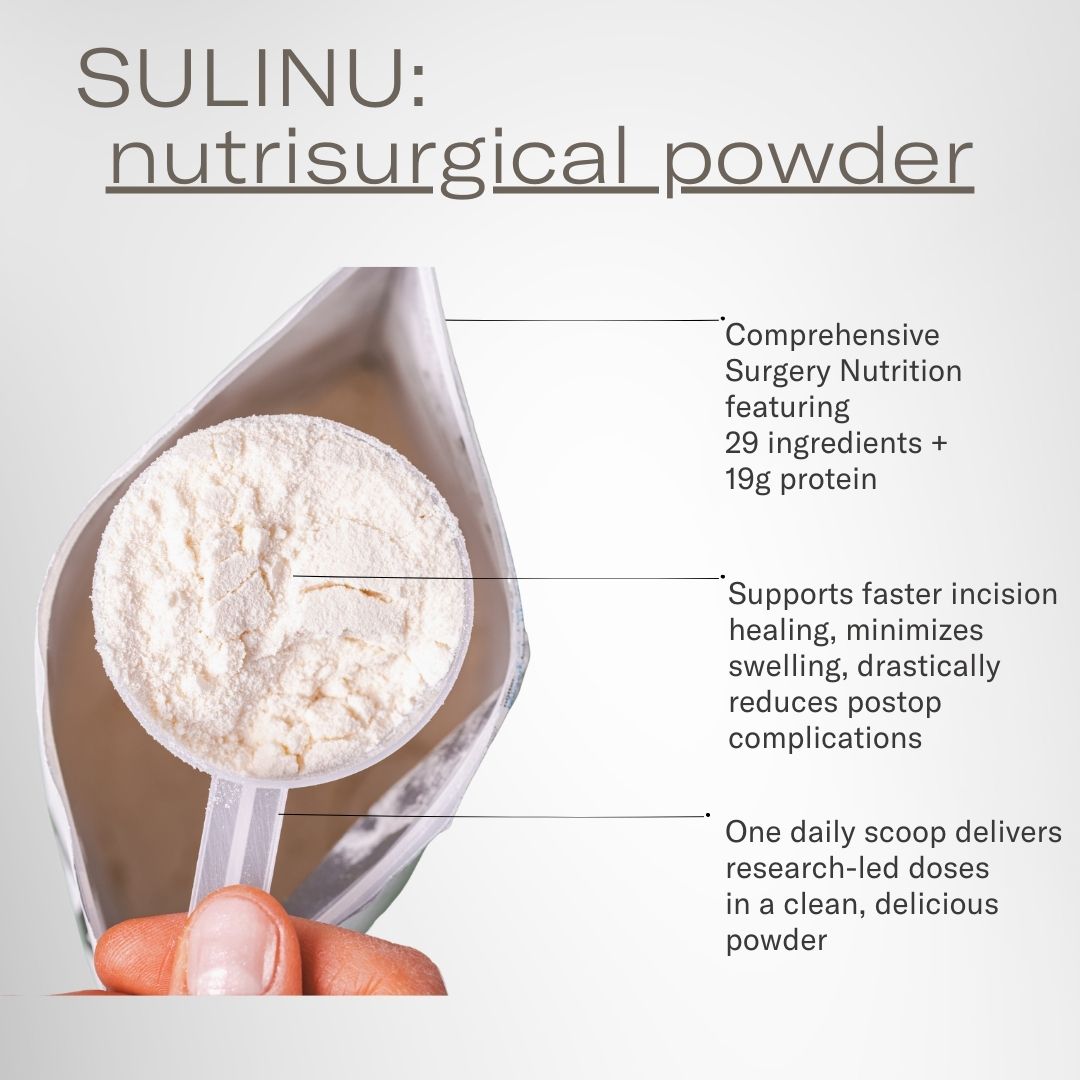
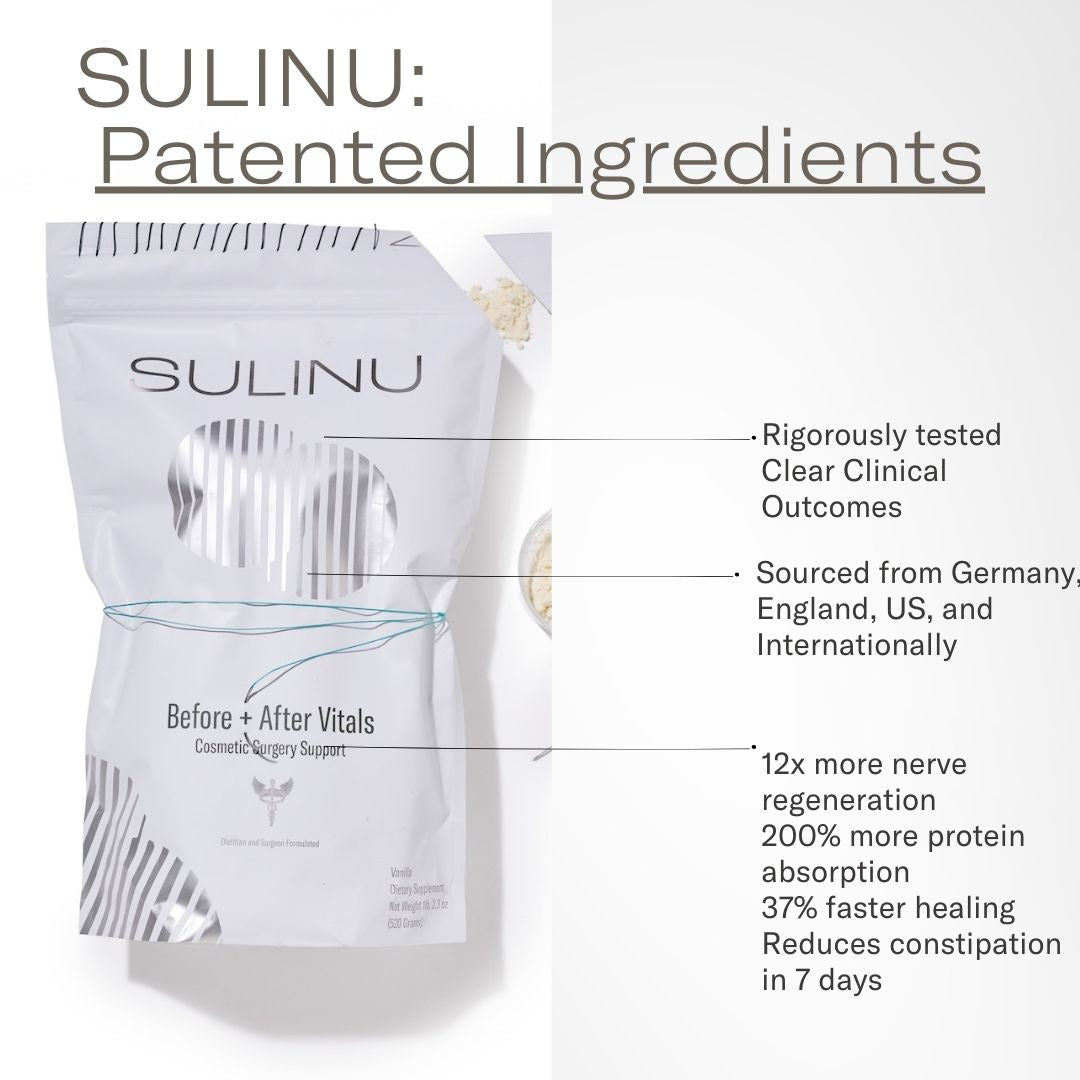

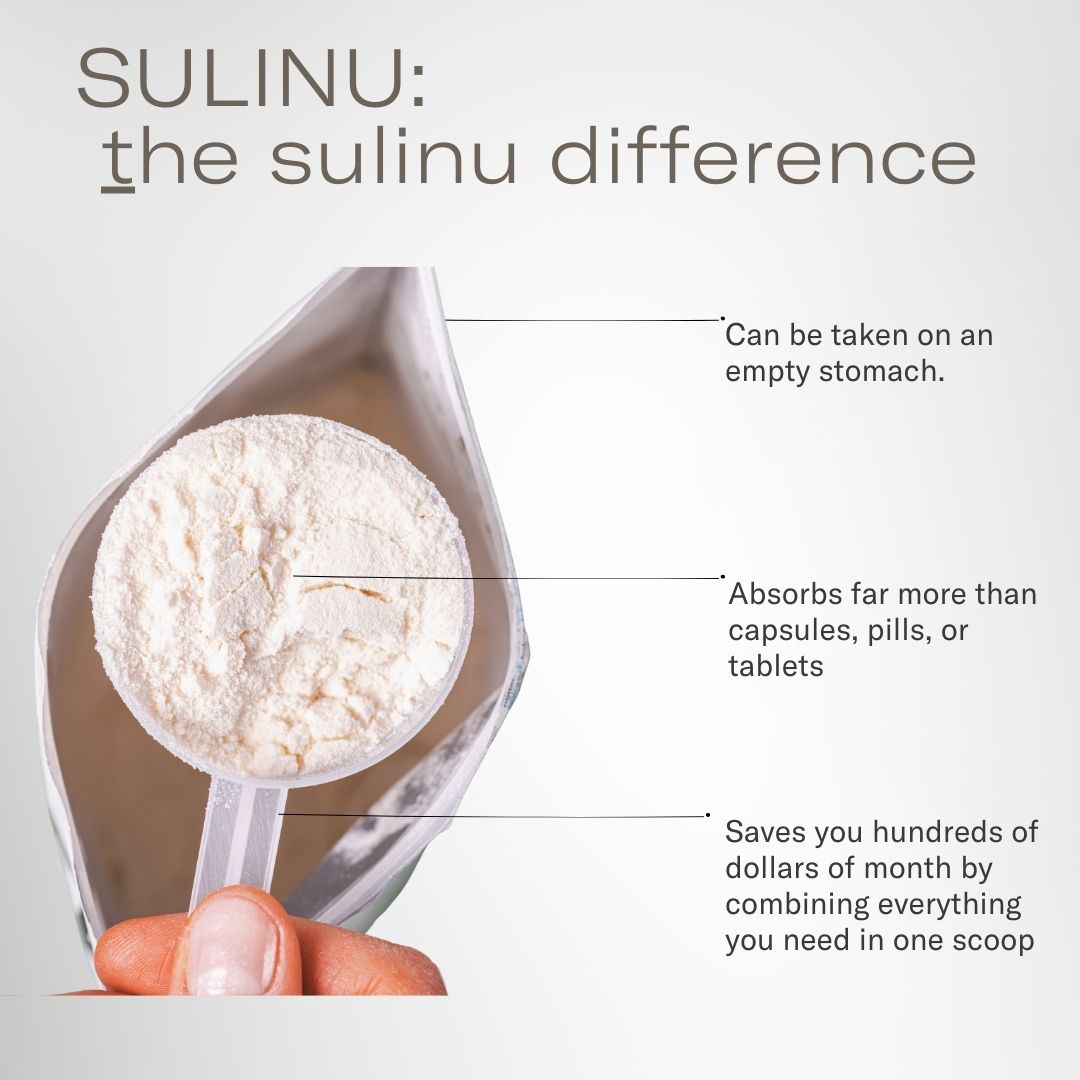
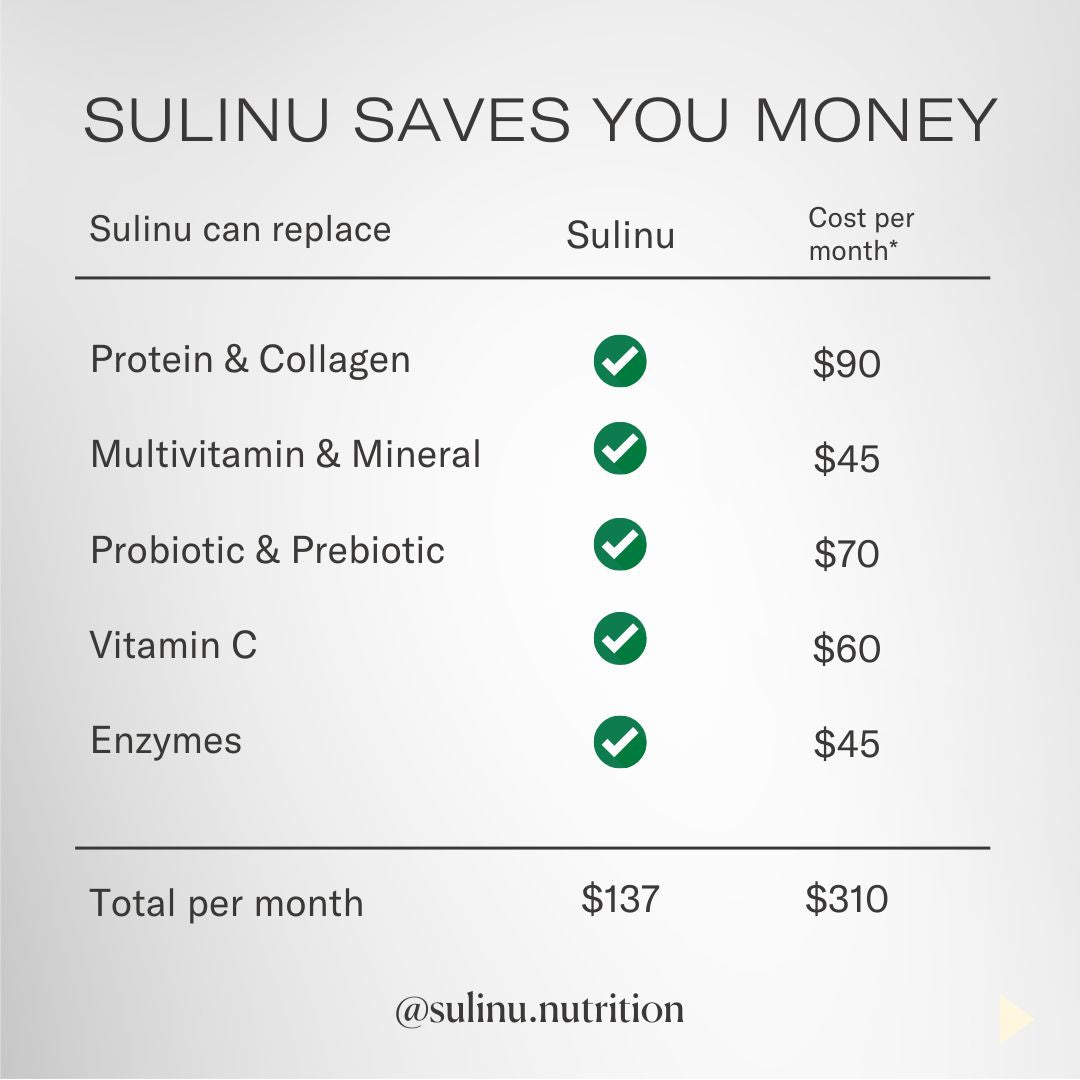
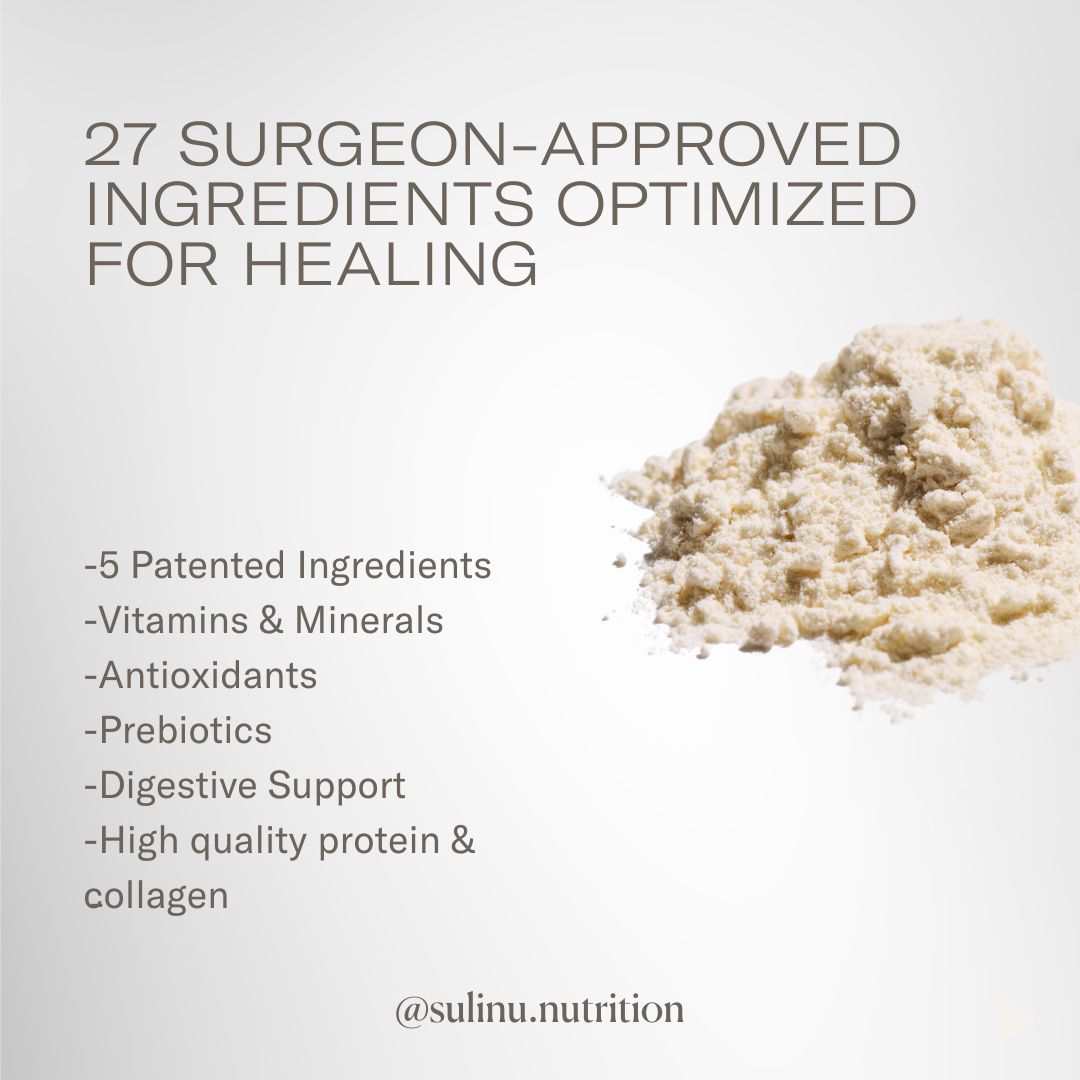
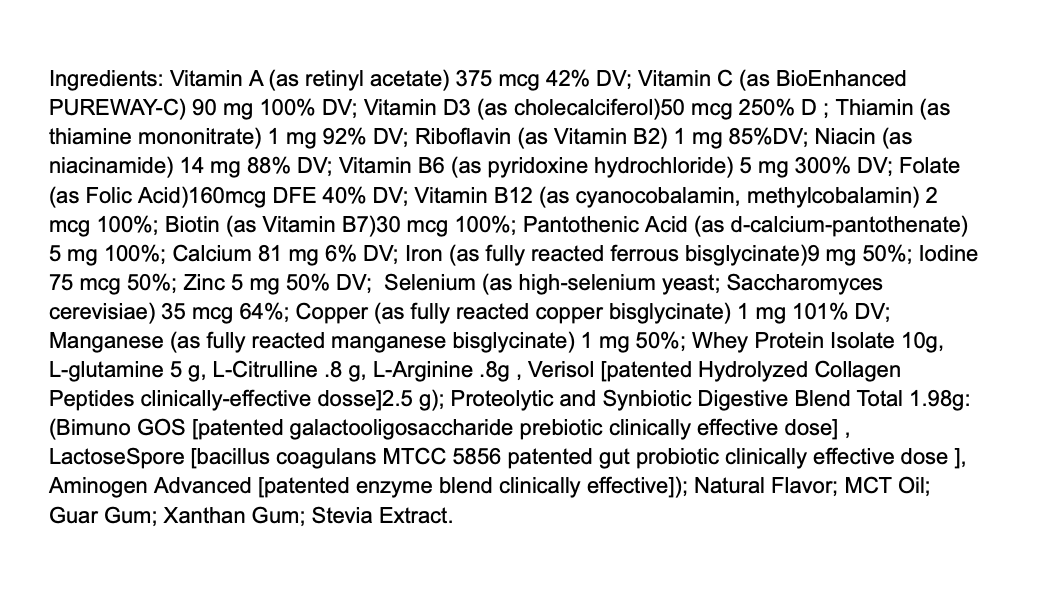
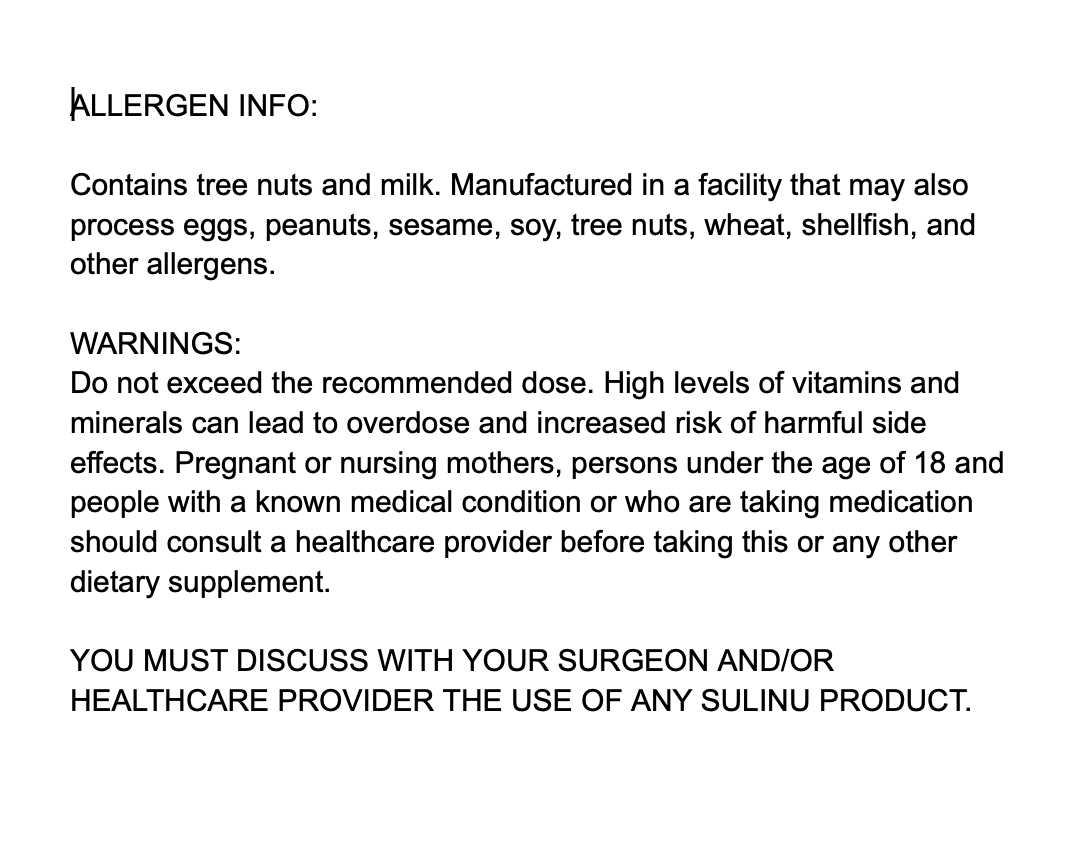



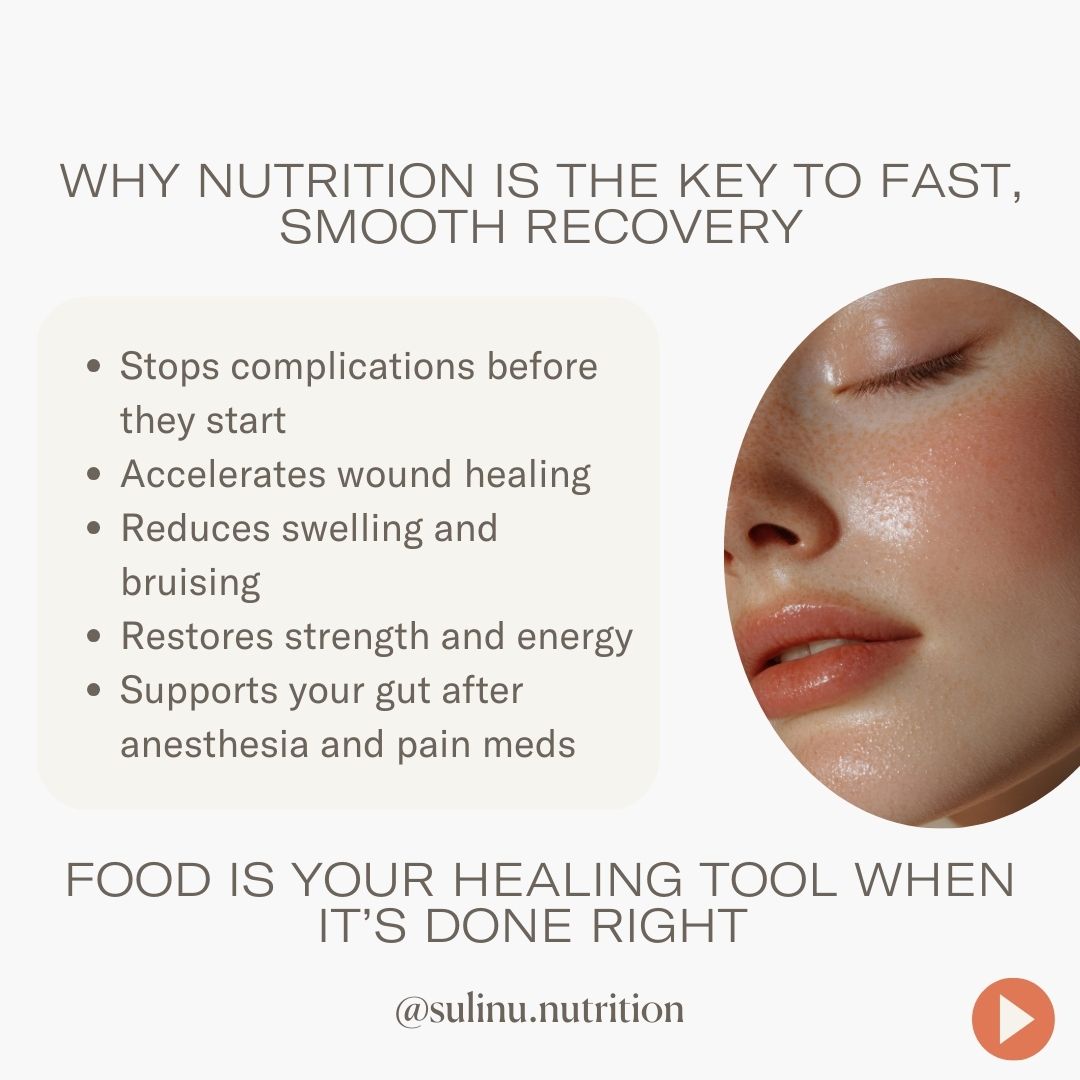
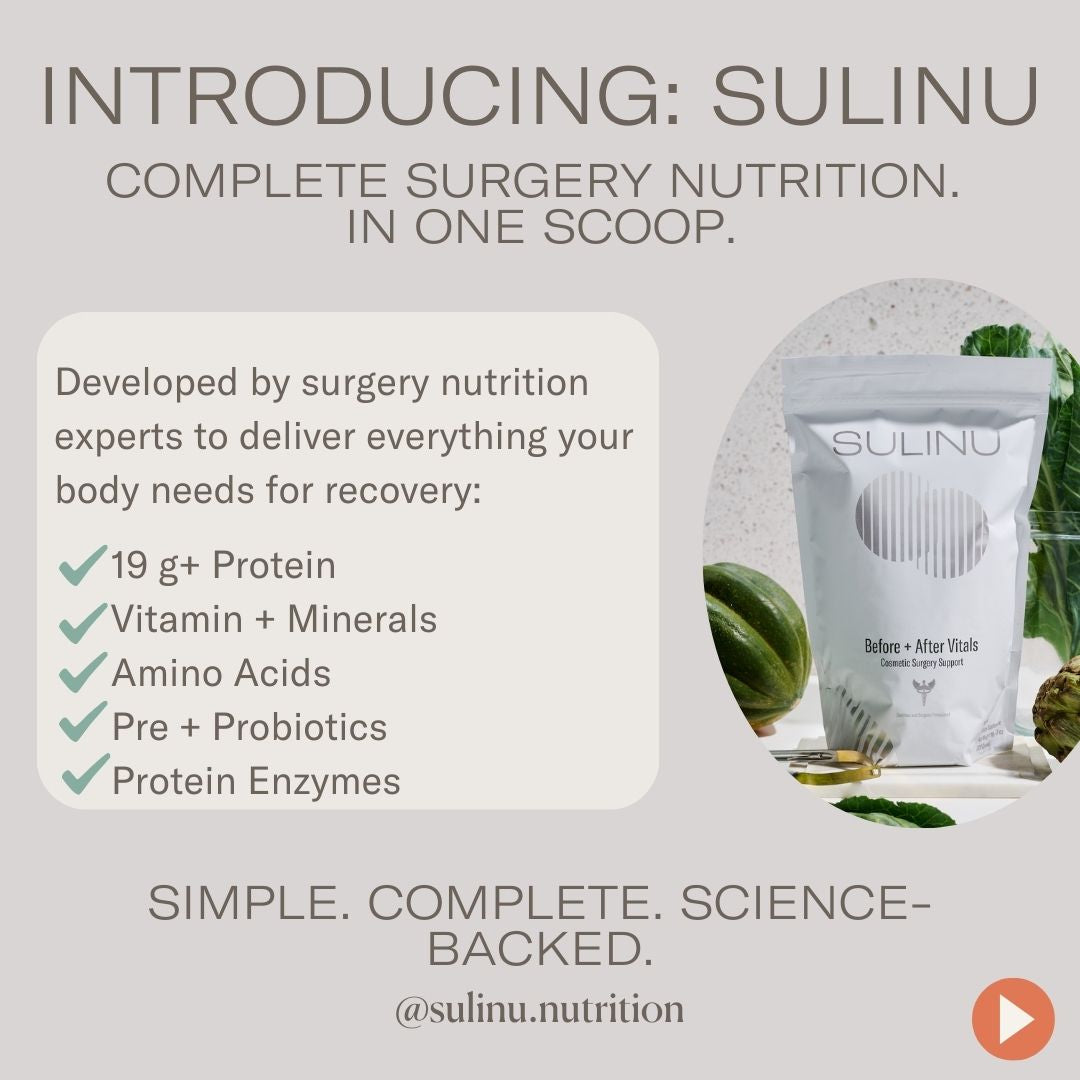

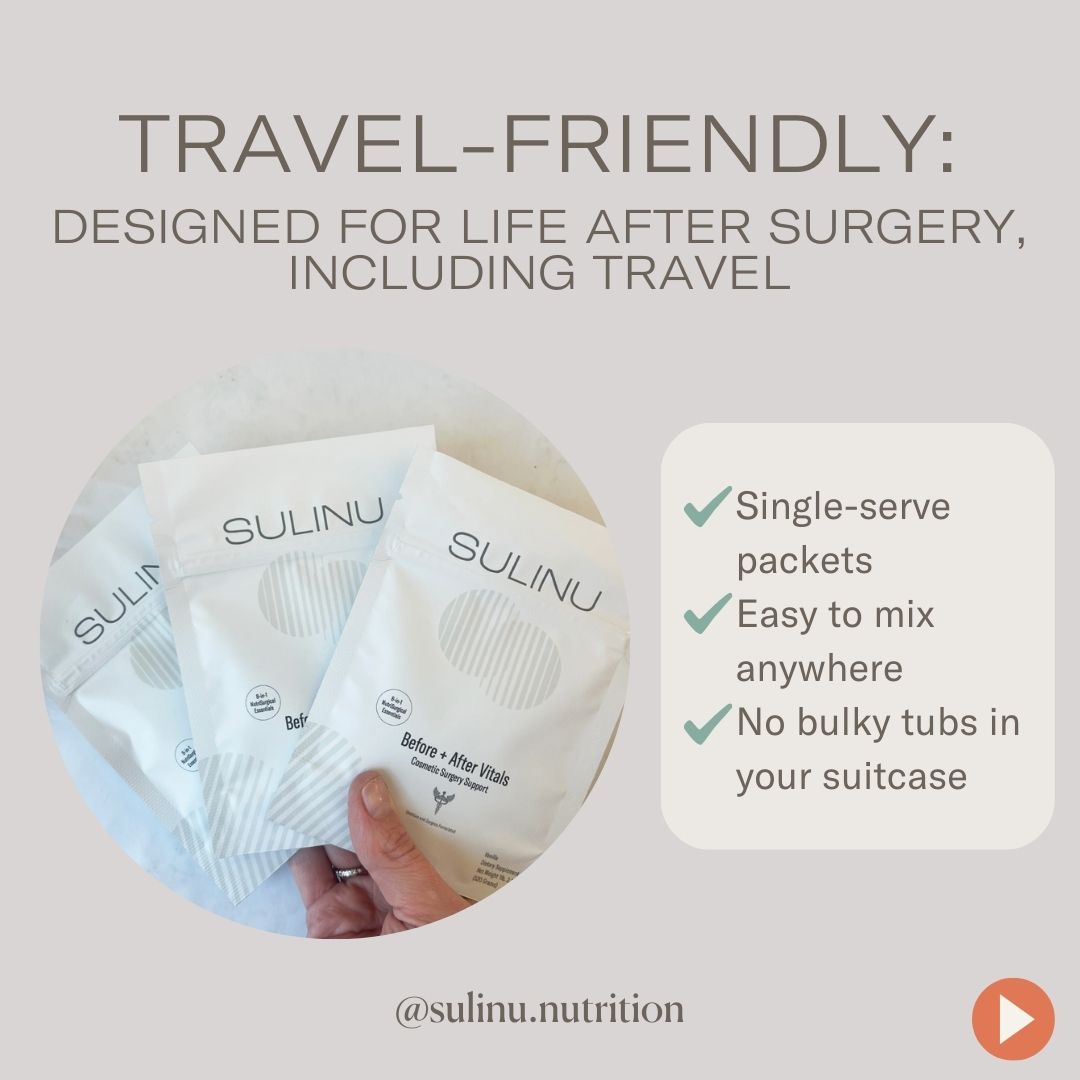
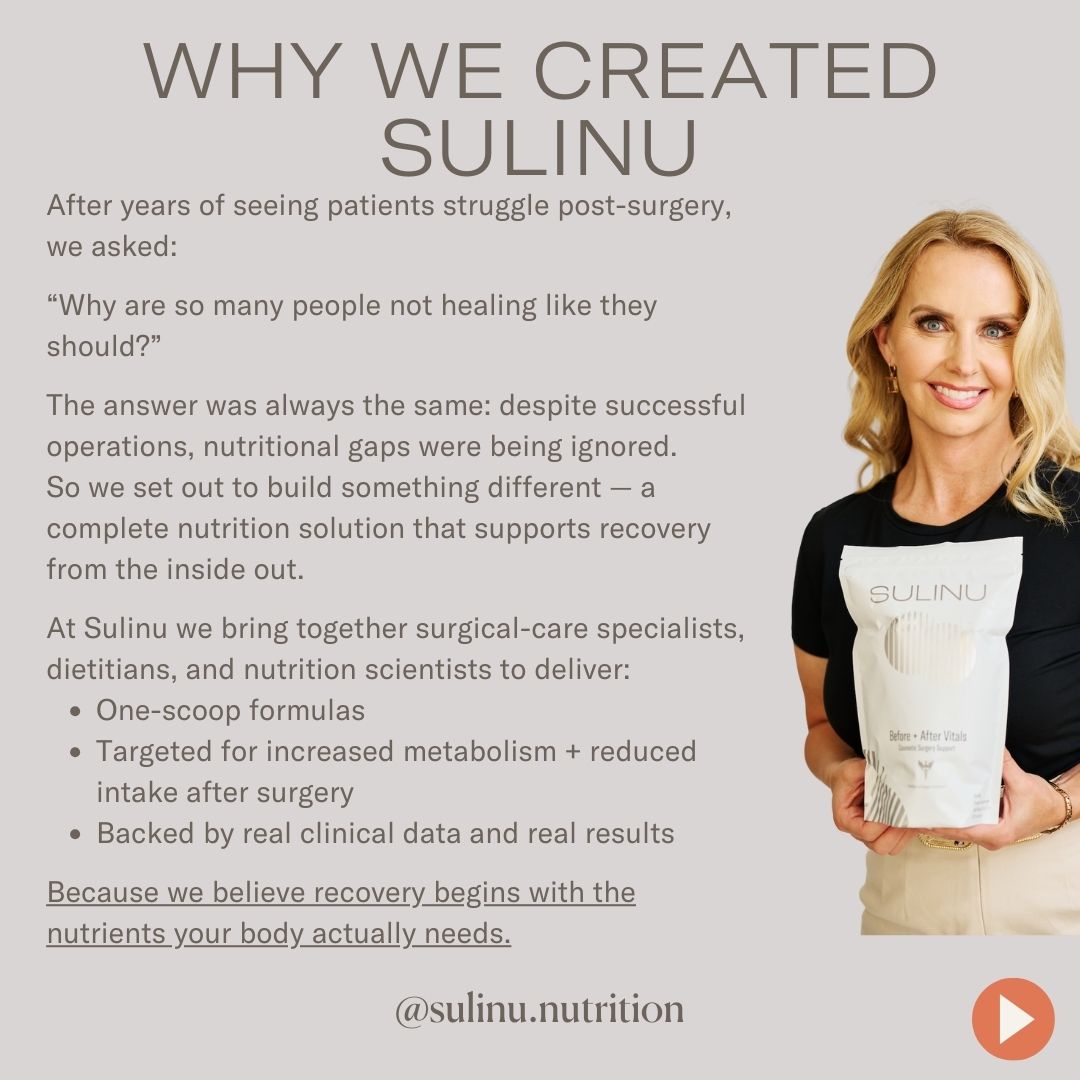

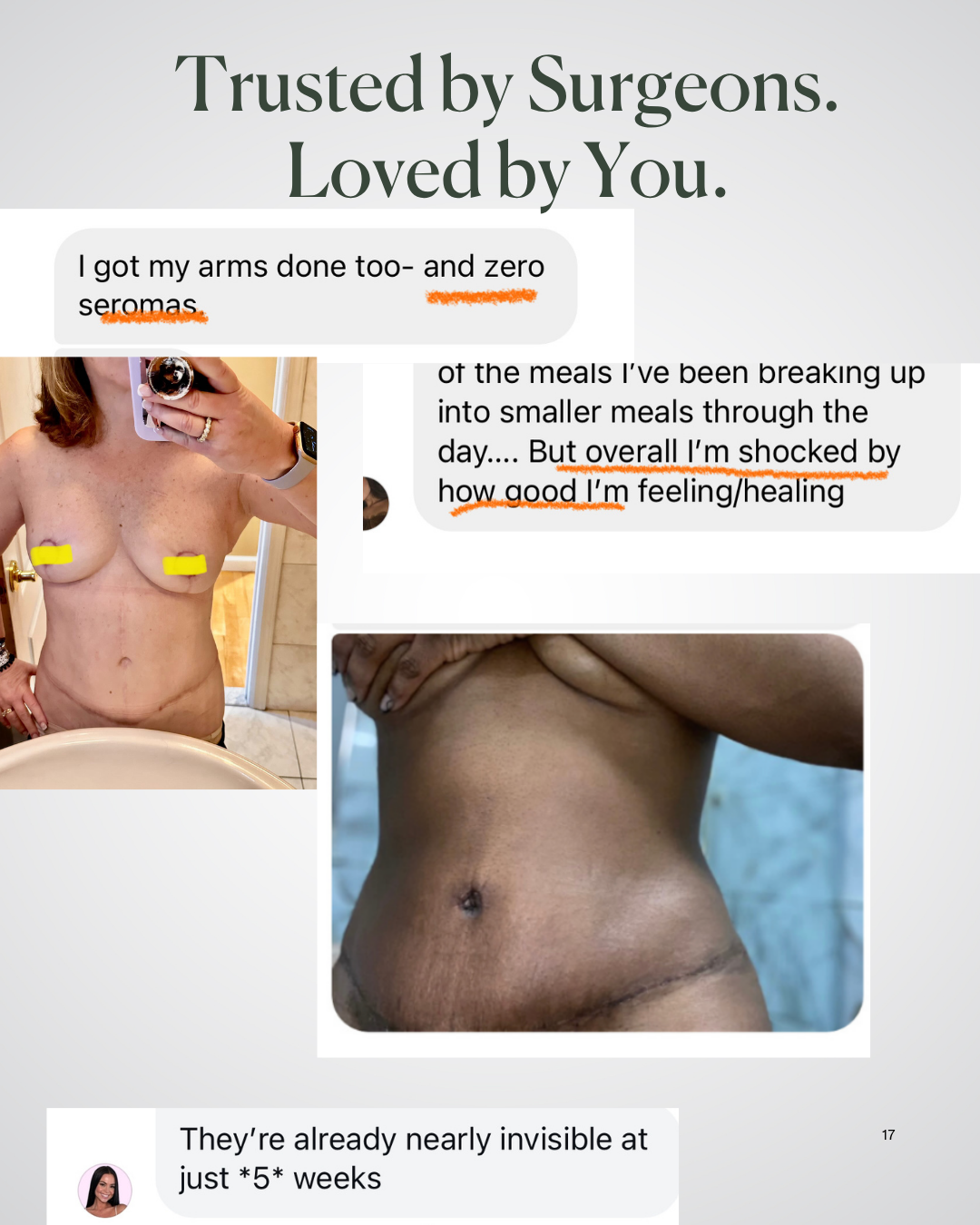
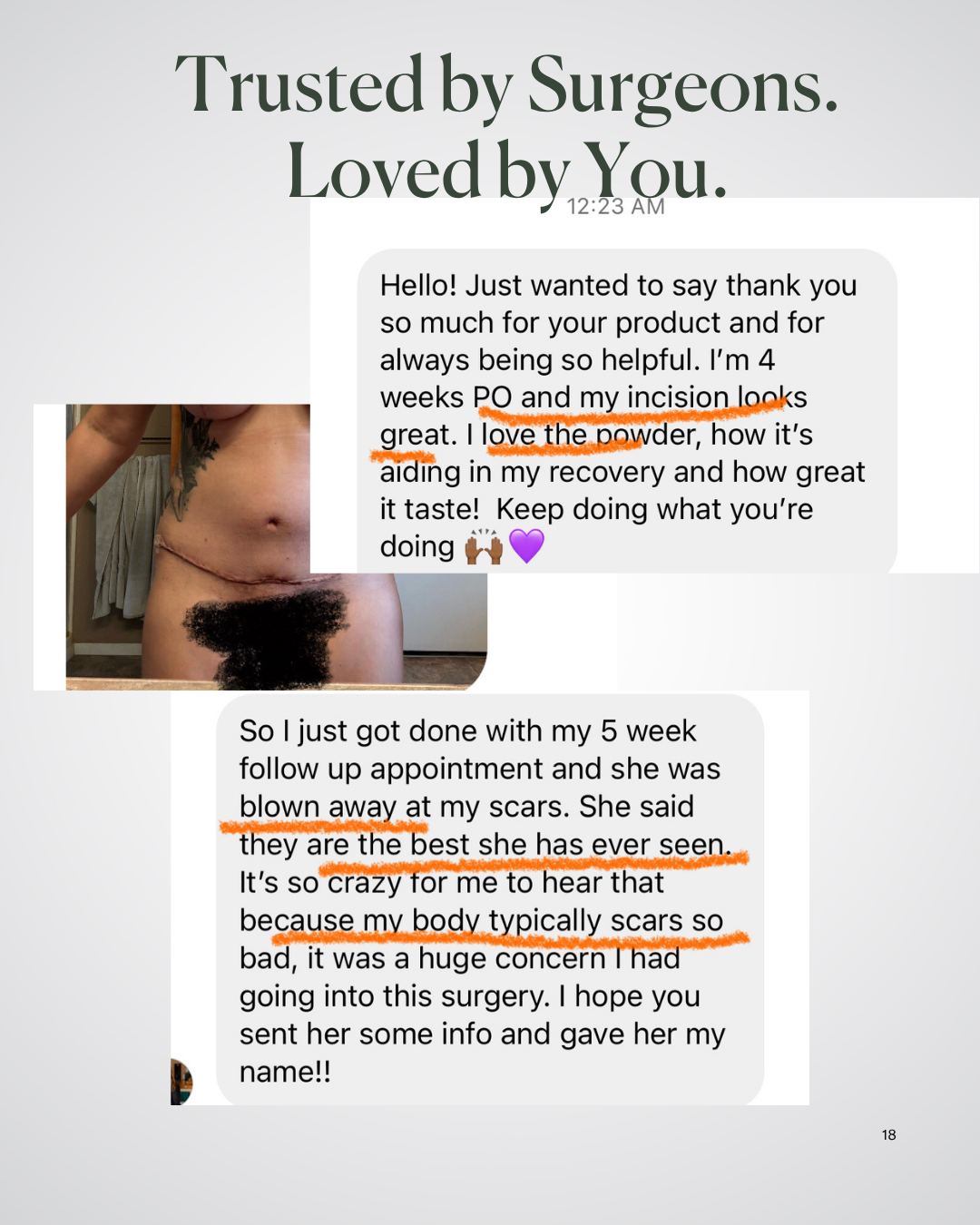
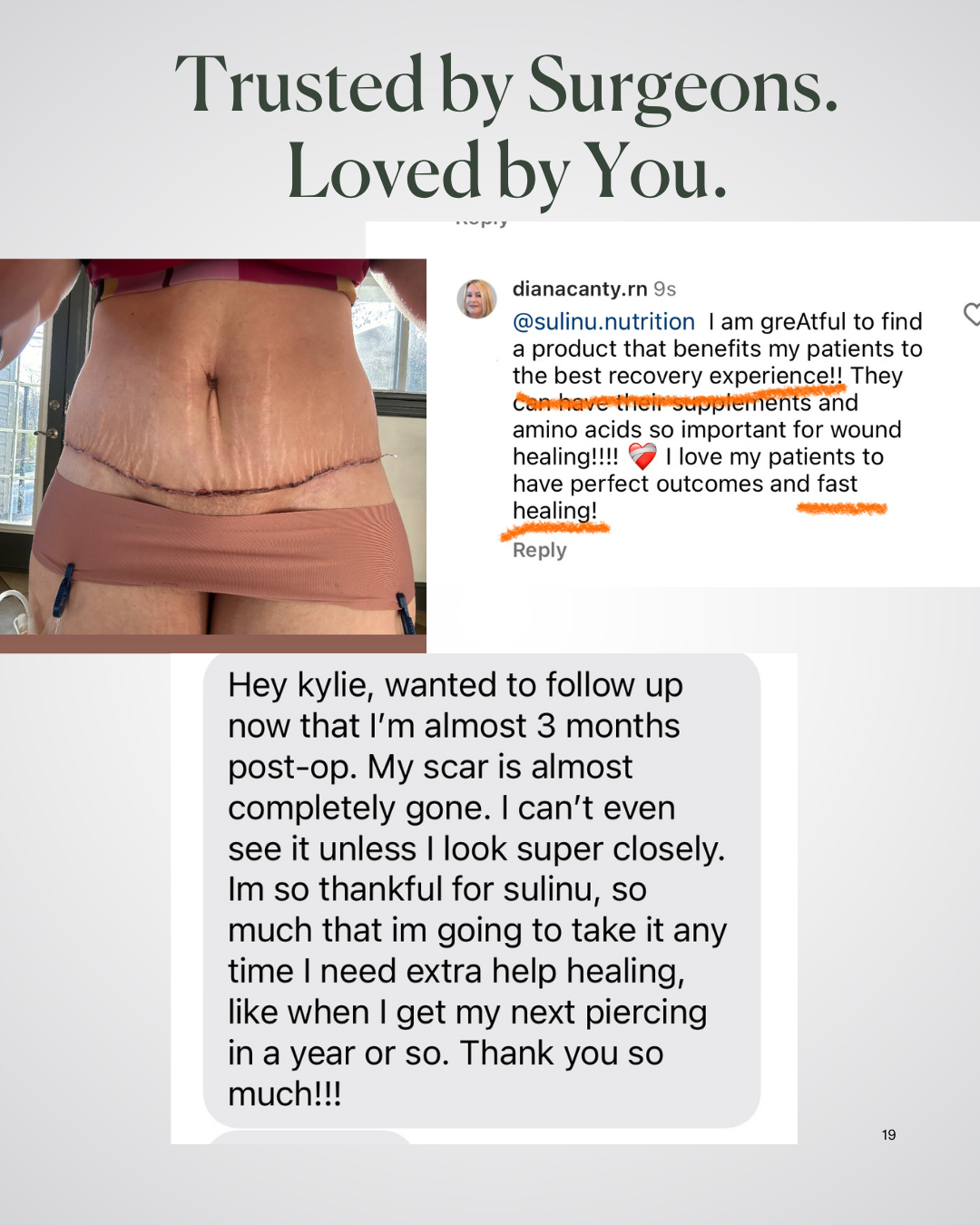
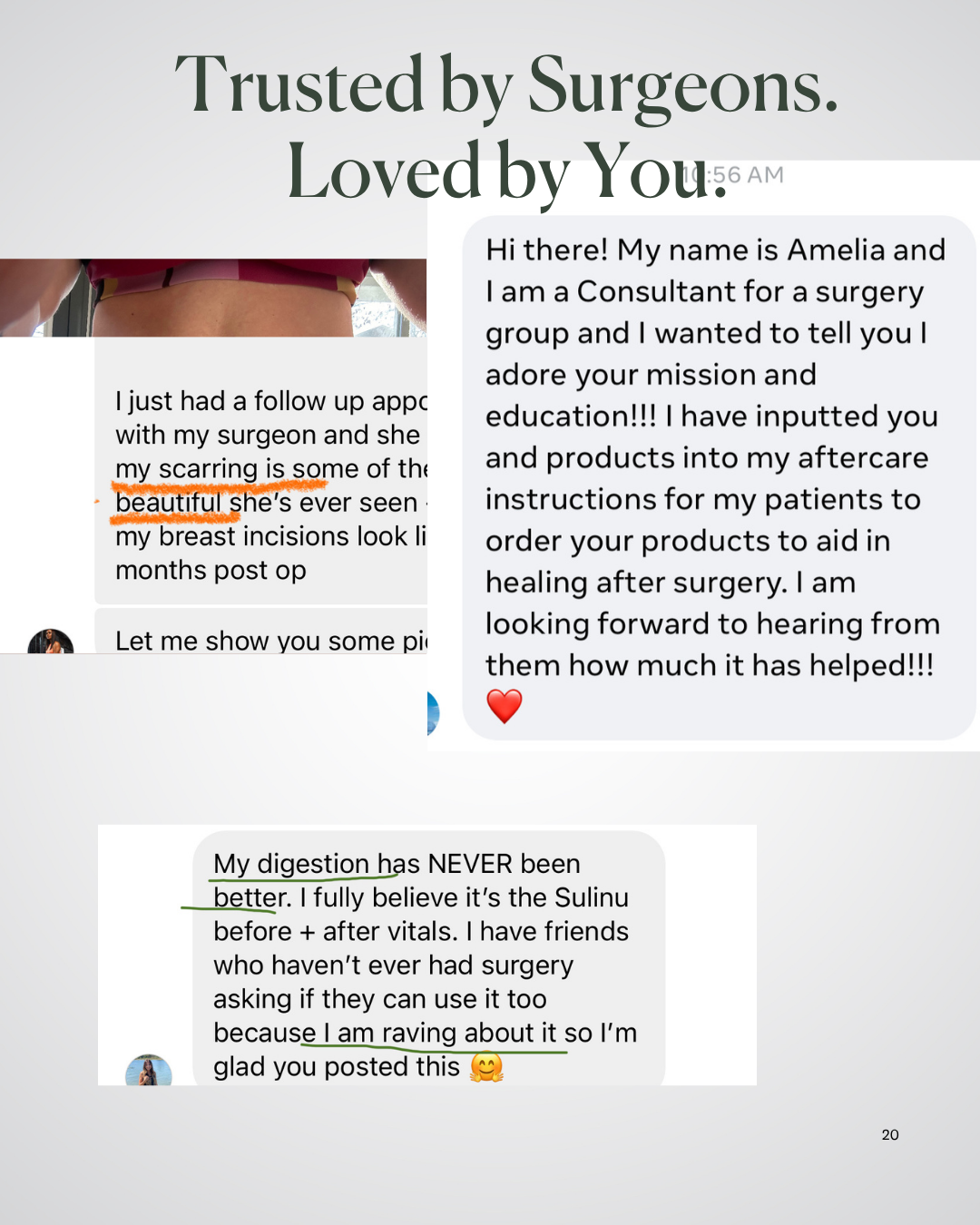
NUTRISURGICAL VITAMIN POWDER -(bag: Vanilla)
**FREE SHIPPING for orders over $150!!**
- 100% Money Back Guarantee
- Discreet Shipping-Your privacy is important
- We recommend 3 bags for any surgery for the best results
This Complete Surgery Powder gives you EVERYTHING you need IN ONE SCOOP.
Pre and Post Surgery Supplements for that near-invisible scar look.
"Can you believe it? [My incision scars] are nearly invisible at just 5 weeks!" -Jessie
Our pre and post surgery supplements are packed with vitamins for wound healing after surgery
- 3rd party tested
- Gluten-Free
- Vegetarian Whey
-
27 Surgeon-Approved Ingredients
- In bioavailable forms
-
5 Patented Ingredients
- Patented is the HIGHEST standard of ingredients
- Faster Incision healing
- Gut microbiome studied
- Clinically tested
- Sourced from Europe and Internationally
- Therapeutic Dosages
Perfect for:
- Before Cosmetic Surgery
- After Cosmetic Surgery
- Slow-to-heal incisions or wounds
- Using a GLP and needing extra nutrition
- Can begin taking at anytime on your surgery journey, EVEN if you are weeks after your surgery! Your scar is healing for a least a year after your surgery date.
How to use:
- Use 1/2 to 1 scoop a day. Max 1 scoop a day for at least 6 weeks postop.
- We recommend 3 bags: Use 1 bag before surgery and 2 bags after surgery
Nutrisurgical Vitamin Powder with Patented, Clinically-tested Ingredients.
All your Protein, Collagen, Amino Acids, MicroNutrients, Synbiotics and Enzymes in ONE SCOOP to give you a seamless recovery after cosmetic surgery.
Note: This product is also commonly used by GLP (Ozempic, Semiglutide, etc) patients to prevent nutrient depletion and Ozempic face
Our Survey Results*:
79% reported a beautiful incision
85% reported a faster recovery
90% liked the taste
X Gluten X Soy X Artificial Colors or Flavors X GMOs
*based upon our postop survey 2024
Introducing BEFORE + AFTER VITALS, the ultimate surgeon-endorsed nutritional supplement tailored exclusively for plastic surgery recovery.
Fears of infection, inflammation, slow-to-heal incisions, and bruising are taken head-on by this super fine, quick-to-dissolve powdered supplement. Add a delicious hit of vanilla flavor to your cold or warm drinks, smoothies, or culinary creations.
1 pouch is 20 servings.
ALLERGY info: Contains lactose. Product was processed in a facility that may also process eggs, peanuts, sesame, soy, tree nuts, shellfish, and other allergens.
